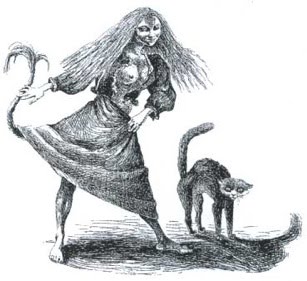Today , December 13th, we celebrate Santa Lucia Day in Scandinavia. This tradition stems from a combination of the celebration of Saint Lucia and the Norse “lusse” celebration. There are many theories behind why we celebrate this day, I will shine a light (no pun intended) on a couple of them here in this blog post.
Saint Lucia, a rich, Roman virgin, was born in the year 283 in Sicily, Italy and was killed (most likely in the year 304) because of her faith during the crusades in the Roman Empire in the 4th century. Lucia was Christian and faithful in her belief, but she was engaged to a man who didn’t believe in God. Her father was dead, but her sick mother wanted Lucia to marry rich, but Lucia didn’t want that. After Lucia’s prayers to the holy Agatha, Lucia’s mother miraculously got well and canceled her wedding. As thanks, Lucia donated her entire fortune to the poor.
When Lucia’s fiancee found out there would be no wedding, he told the emperor about Lucia’s Christian faith. During this time, Christians were being persecuted, everyone was to worship the emperor. She refused to do so and remained faithful to her beliefs. As punishment, she was given a death sentence by burning. The tale goes she died holding a burning candle in her hands. The name Lucia, is a female version of the Latin name Lucius, which means “light” or “brightness”. Very early on, people started building bonfires and holding a festival of light in Sicily to honor her name .

The tradition of letting a white clad Lucia spearhead a parade with girls dressed in white with candles in their hands and hair, started in Germany after the reform in 1536. In Norway this tradition really only began just a couple of decades ago, while this celebration has a much longer history in Sweden. It is believed the “Santa Lucia” celebration has became more popular as of late in Norway because of the number of Swedish people moving there to work.

In older Norwegian farmer tradition, this day also went by “Lussidagen”, “Lussinott”, “Lussimess” or “Lussi langnatt” (Lussi long night). It was regarded the longest night of the year; when water turned to wine, and the animals in the barn were able to talk. People complained that this night was as long as two nights put together. there were a lot of trolls and other evil creatures out during that night, so people were to stay indoors.
All the major work for Christmas had to be done by this day. If somebody was still baking or brewing bear, Lussi, a female troll, would appear and yell down through the chimney: “Don’t brew or don’t bake, don’t keep big logs on the fire. If you do, your dough will divide in two, your grinding stone in seven, and your baking/work table in fifteen pieces” (this sounds a little better in Norwegian, haha!). She would then punish the people who were still working. Young women were believed to be able to see their future husband if they fasted, and trolls went from house to house to make sure everything was prepared for Christmas. So in short, this night was thought to be long, dark and dangerous, and was named after Lucifer, the devil, and not Lucy, the saint.

This story might be more in line with another popular belief, that most likely started in Germany around the 17th century. The story goes that on this night, the devil, in form of a cat, would give naughty children a beating, while Jesus, in the form of a child, would hand out rolls to all the good children. Since the devil was scared of light, the rolls (lussekatter) were colored with the bright yellow spice of saffran to keep him away. Lusse is the name for Lucifer, and “katter” is Norwegian for “cats”.
So a lot of stories around these lovely saffron buns, wouldn’t you agree? I could go on and on, as stories vary from country to country, but I have to have some material for Christmas of 2016 as well, right? 🙂
In the mean time, I will leave you with my recipe for lussekatter, as always dairy free and eggless, but nonetheless just as delicious as (and healthier than) the traditional recipe! We enjoy these straight out of the oven, preferably accompanied by a cup of rich, hot chocolate while watching the snow fall outside…. Happy baking and Happy Santa Lucia Day!!
LUSSEKATTER
100 grams (about 1 stick) butter plus extra for brushing dough
1 cup plant based milk
1 packed dry yeast (about 2 1/4 tsp)
1 gram saffron
100 grams granulated sugar
1/2 tsp salt
1 tsp cardamom
about 3 cups all purpose flour
1/2 cup raisins
Melt the butter in a small pot on the stove, add in the milk and stir together, set aside. The temperature of the liquid should be around 120 degrees Fahrenheit. Pour the liquid into the bowl of a standmixer and sprinkle in the yeast. Let sit for a couple of minutes. Attach the dough hook and add in the sugar, saffron, salt and cardamom. Slowly add in the flour (start with 3/4 of the amount) and add in more flour as needed. The dough should be smooth and firm. Cover the dough with plastic wrap, place in a warm spot and let rise until double in size, about 1-1 1/2 hours.
On a clean, lightly floured work surface, divide the dough in four equal pieces, then divide those again in four, so you have 16 pieces. Roll each piece into links about 6 inches (15 cm) or longer. Shape them any way you want, here is an example of different shapes you can try out:

Image from Julbaket/receptfavoriter.blogg.se
Here are some of my shapes (as you can see, I need to perfect my skill, lol):

Place them on to two baking sheets dressed with parchment paper, cover with a clean towel and let rise for another 30 minutes. In the meantime, preheat the oven to 500 degrees Fahrenheit (250 degrees Celcius).
Stick raisins in the dough /creases of the shapes, brush the rolls with melted butter and place in oven. Bake for 6-8 minutes until golden on top, fluffy and moist on the inside. Enjoy!!










Thanks Sunny! As a kid just out of gymnaset I worked part time for an Oslo daily called Morgenposten, often referred to as “Sværta” locally, and they had an annual search for a girl to be their Sancta Lucia and more to be her followers. It was a big deal… 🙂
Haha, I bet, Harald! It’s fun to hear stories around the Santa Lucia tradition… so thanks for sharing!! 🙂
I will be making them today! They look just amazing & I always wanted to try them out at home!
MMMMMMMM!
Would love to hear what you think of them, Sophie! They definitely have a unique flavor because of the saffron… I would not be shy with adding sugar in them, because that brings out both the cardamom and the saffron spices… Happy baking!! 🙂
I made this batch of great shapes & sizes & loved the flavor of it all! So superb in flavor! xxxx
So glad you tried them out and liked them, Sophie! Yes, they have a very unique (and delicious) flavor, don’t they?? Thanks for letting me know!! xoxo